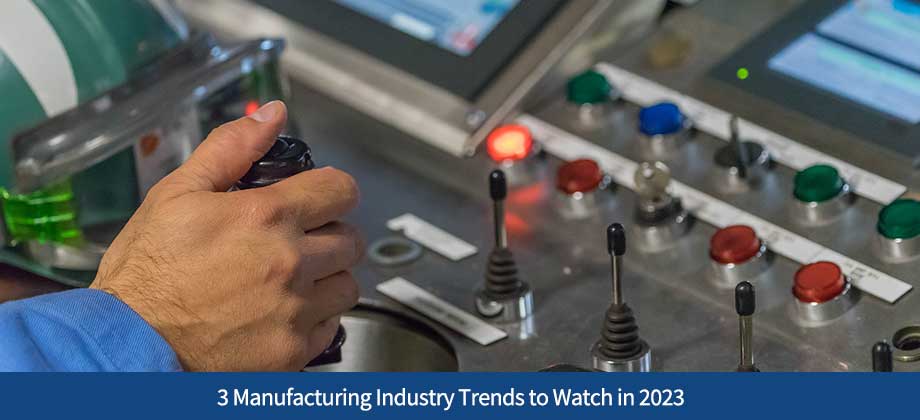3 Manufacturing Industry Trends to Watch in 2023

On average, the manufacturing industry has grown 6.6 percent per year between 2017 and 2022; in 2022, the industry’s market size was measured at $8.8 trillion (in revenue). These are significantly impressive numbers, considering the stubborn presence of labor shortages, supply chain issues, and an economy crippled with the residual effects of a global pandemic–and they far surpass a lot of experts’ previous predictions. But we’re not totally out of the woods: What’s expected to plague the manufacturing industry in 2023 is inflation, a lack of high-caliber workers, and cybersecurity concerns. As we head into 2023, let’s take a look at 3 industry trends we predict will be critical in maintaining this growth trend while mitigating risk.
Talent Management
Employee engagement and retention are always top of mind for business owners. With a labor shortage gripping the manufacturing industry, it will be more important than ever that management focuses on hiring the best and brightest–and keeping them around. Remember, lack of a strong workforce costs your business time and money. Companies are less able to respond to economic shifts in an efficient manner if the right people aren’t in place who can quickly change course. Some strategies to consider when looking to reduce churn include wage increases; greater focus on diversity, equity, and inclusion (DEI); and flexibility, including a potential hybrid working structure.
Technology
We know technology is continuously improving, and nowhere more so than in the manufacturing industry. Investing in and implementing new technology has been the saving grace for a lot of manufacturing companies, as it places them in a better position to quickly adapt and rebound during times of economic uncertainty. To streamline operations, manufacturers surveyed by Deloitte noted their plans to focus on robotics and automation (62 percent) and data analytics (60 percent) in 2023. For instance, it’s much simpler for a company to forecast when they have robust data and analytics capabilities. And with automation in place, manufacturers can increase productivity and tackle the labor shortage at the same time.
Supply Chain Focus
The uncertainty surrounding the shortage of materials still warrants concern from manufacturers. To lessen the impacts of these supply chain disruptions, manufacturers have adopted more advanced digital technologies, strengthened their partnerships with suppliers, and created redundancy in the supply chain.
It’s also worth noting the importance of staying local. Manufacturers have increased their operations locally in an effort to limit avoidable snags, like logistics flukes or transportation issues. There’s also increased focus on building production factories right here in the United States–a venture that is further bolstered by The Infrastructure Investment and Jobs Act (IIJA).
We’ll continue to keep an eye on these trends over the course of 2023. All the hard work that was done in terms of innovations in the manufacturing industry will surely get more traction in the coming year. It’s important to position your company for growth while also keeping an eye on potential setbacks: in essence, hope for the best but prepare for the worst. And for more content on the latest industry and financial trends, you know where to find us.
Your privacy is important to us. ARF Financial will never sell or rent your information to any third party. Click here for more information about our privacy policy.

